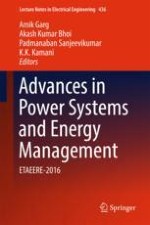This book is a collection of research articles and critical review articles, describing the overall approach to energy management. The book emphasizes the technical issues that drive energy efficiency in context of power systems. This book contains case studies with and without solutions on modelling, simulation and optimization techniques. It covers some innovative topics such as medium voltage (MV) back-to-back (BTB) system, cost optimization of a ring frame unit in textile industry, rectenna for radio frequency (RF) energy harvesting, ecology and energy dimension in infrastructural designs, 2.4 kW three-phase inverter for aircraft application, study of automatic generation control (AGC) in a two area hydrothermal power system, energy-efficient and reliable depth-based routing protocol for underwater wireless sensor network, and power line communication using LabVIEW. This book is primarily targeted at researchers and senior graduate students, but is also highly useful for the industry professional and scientists.
